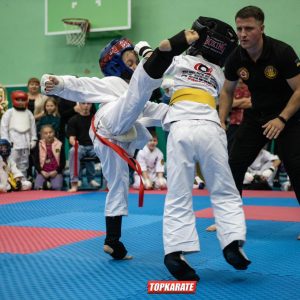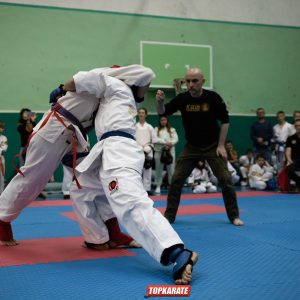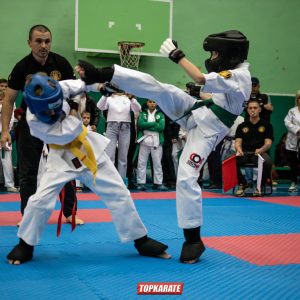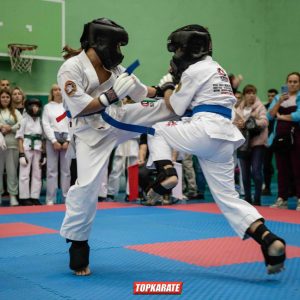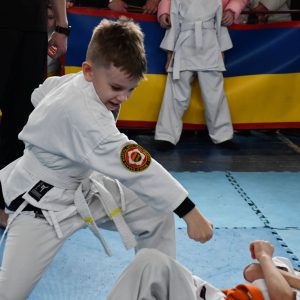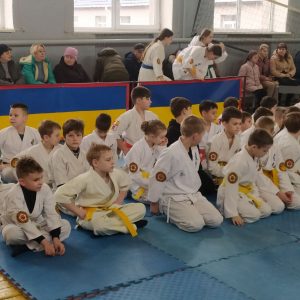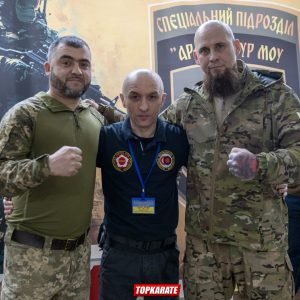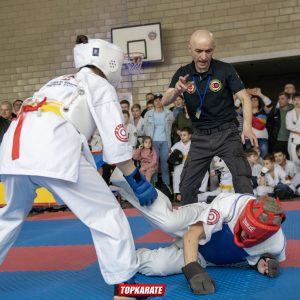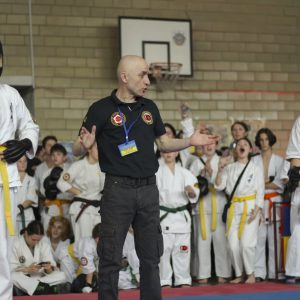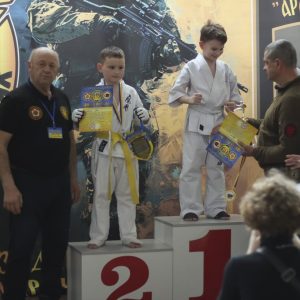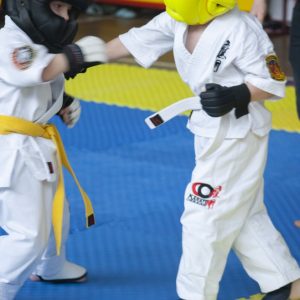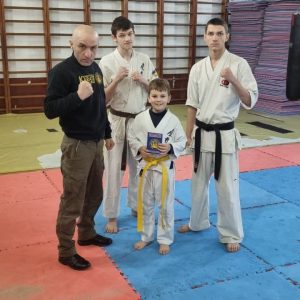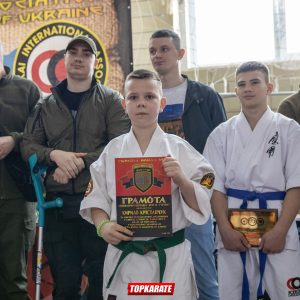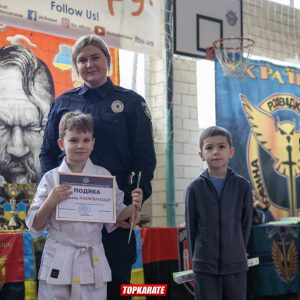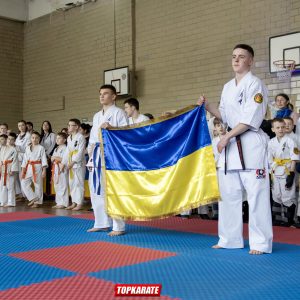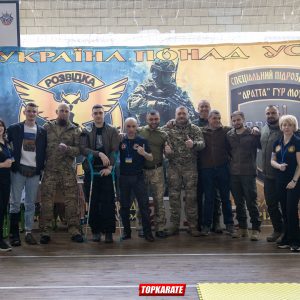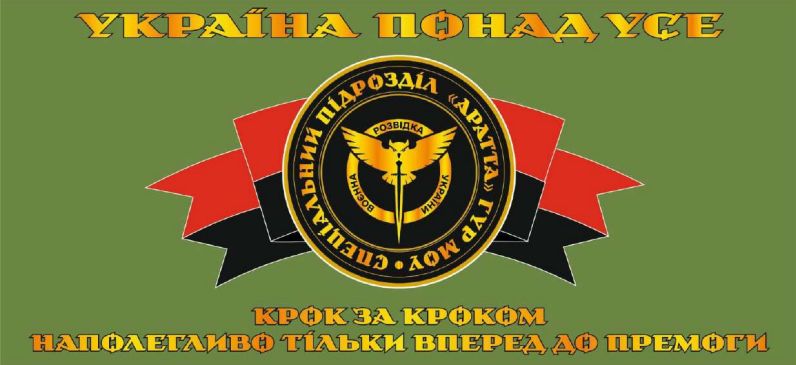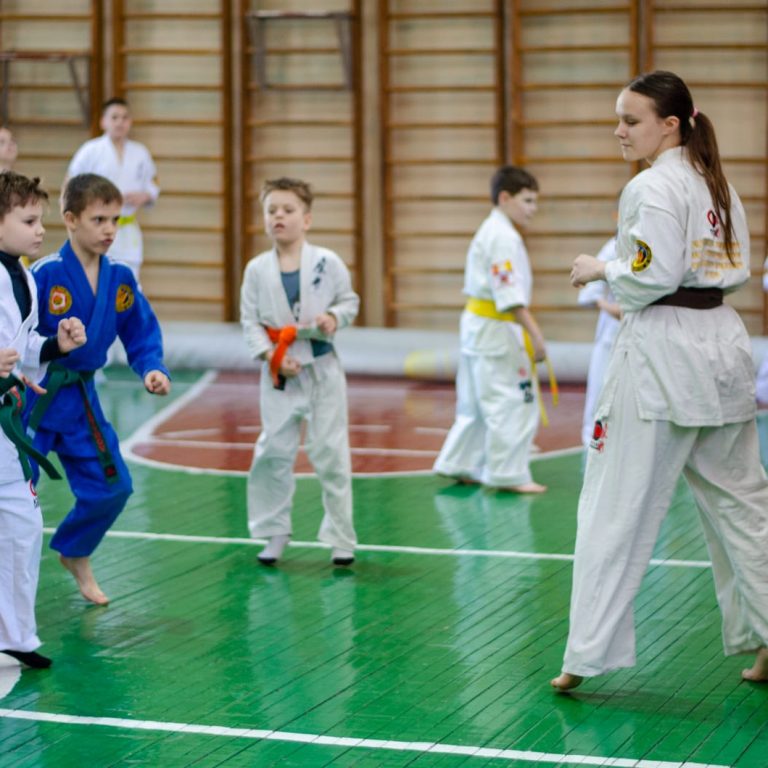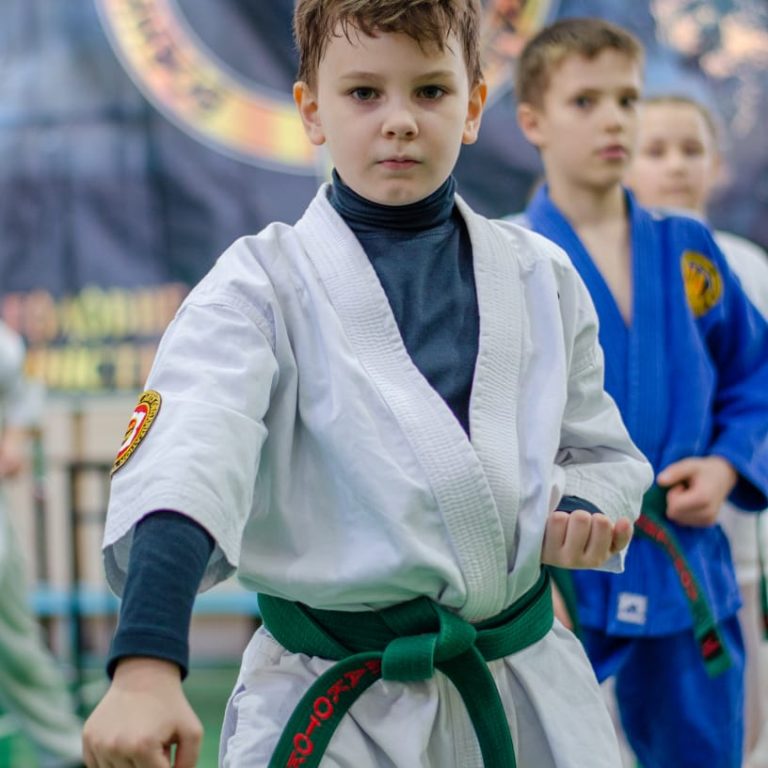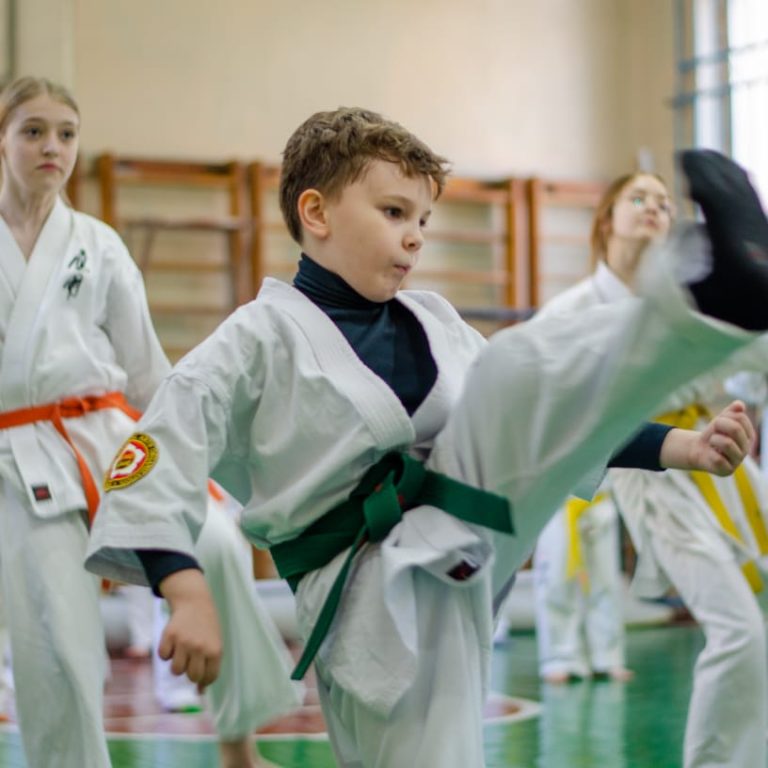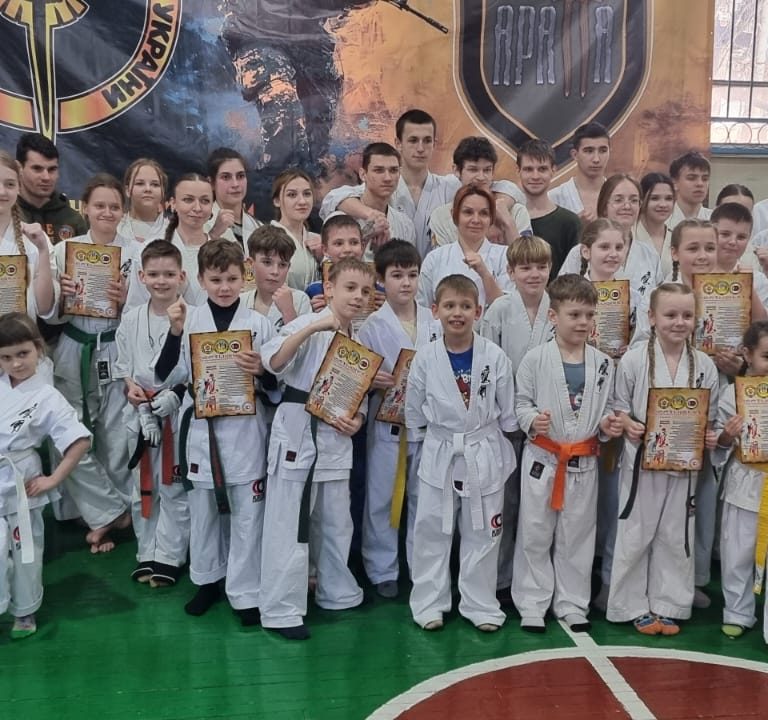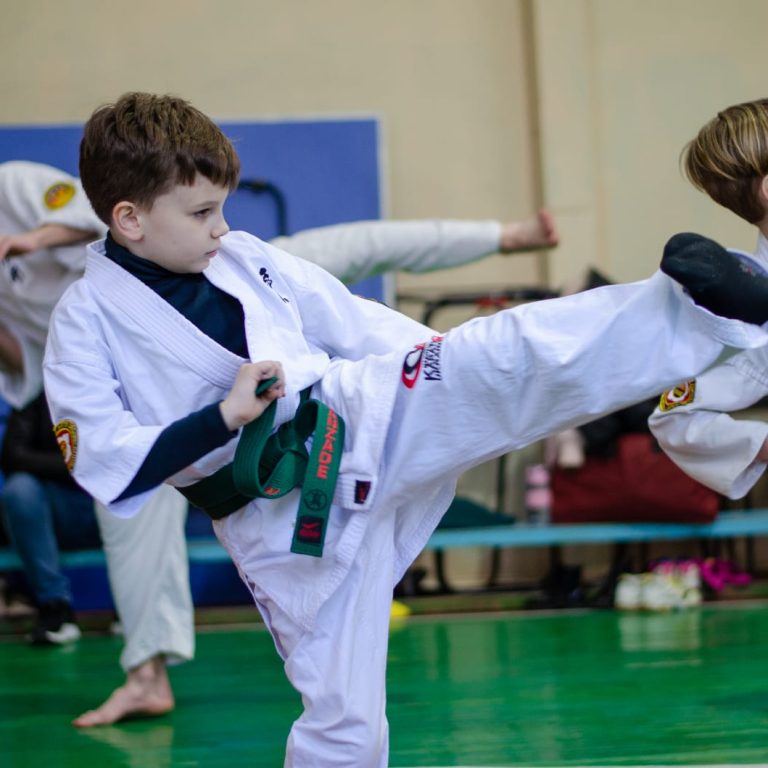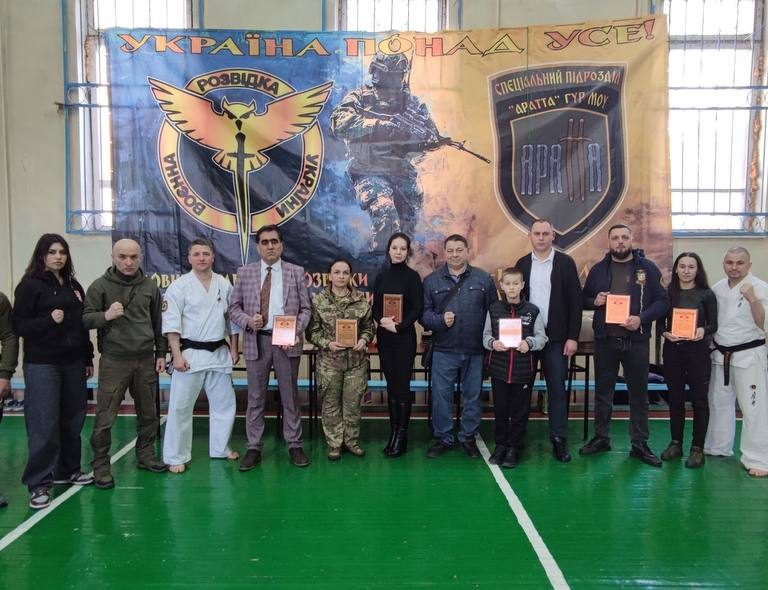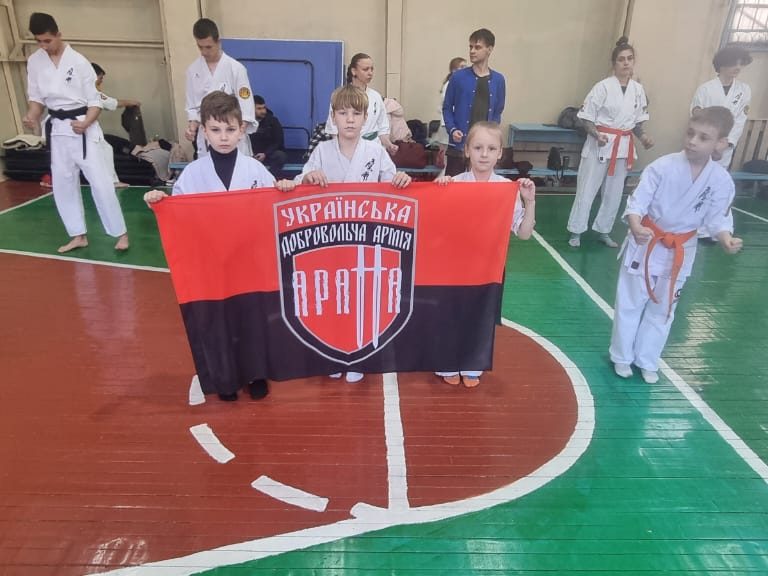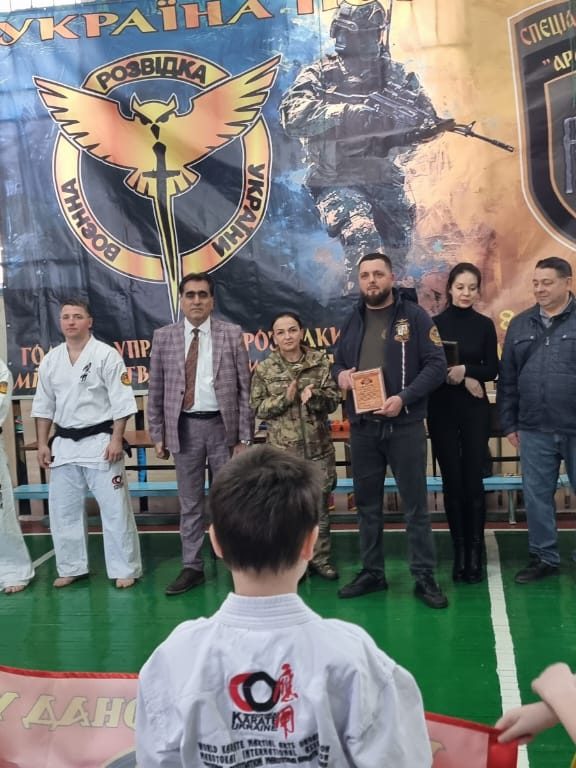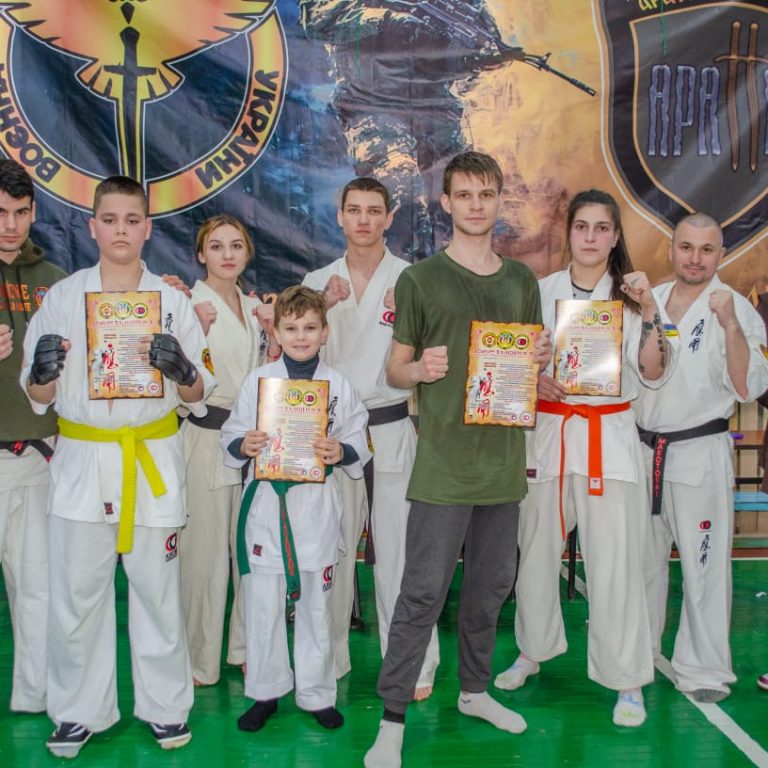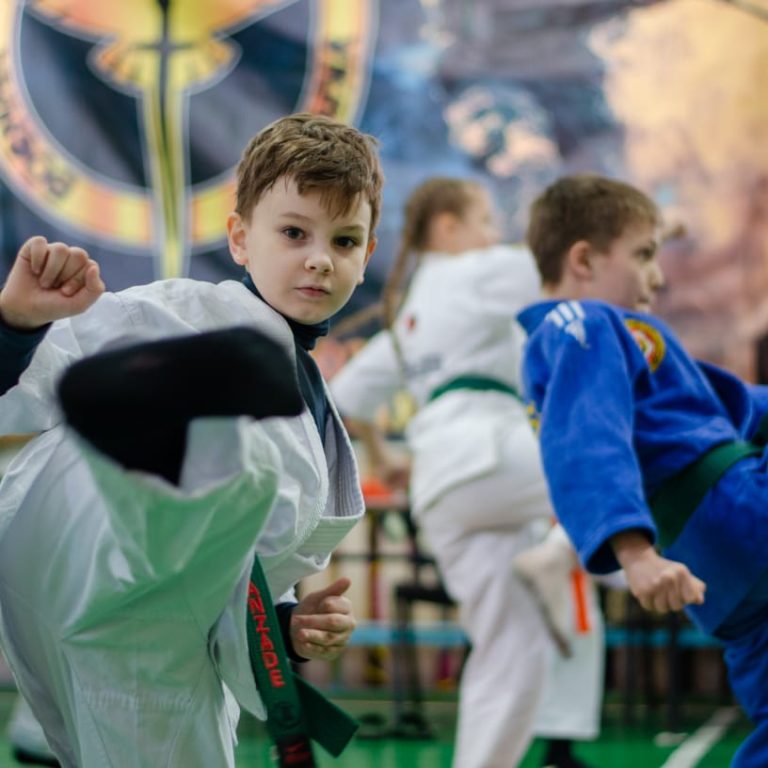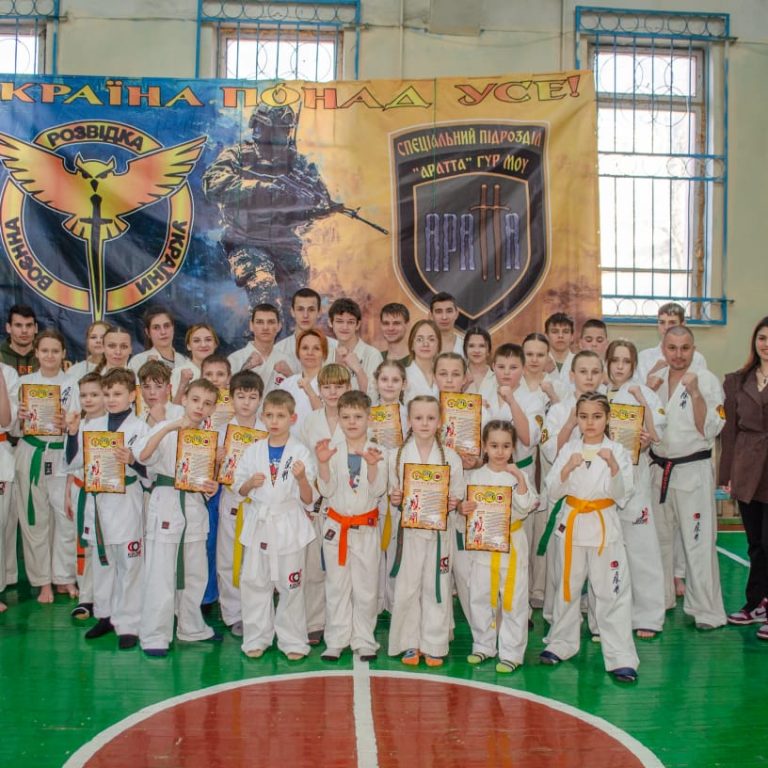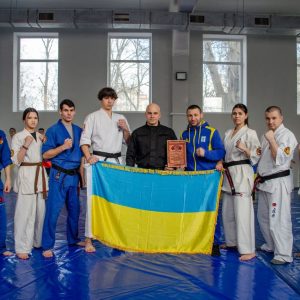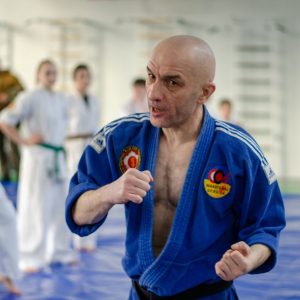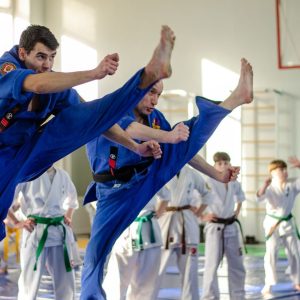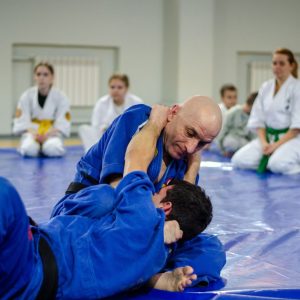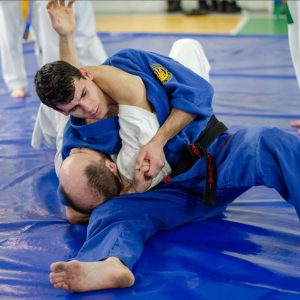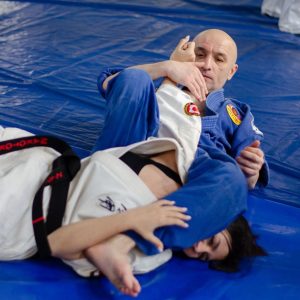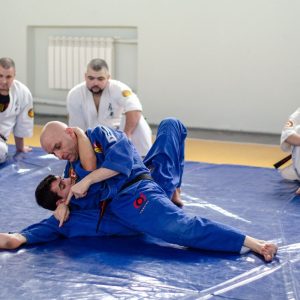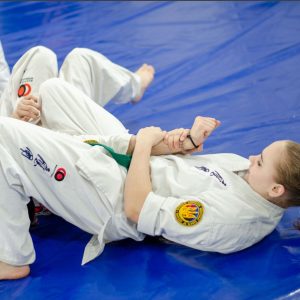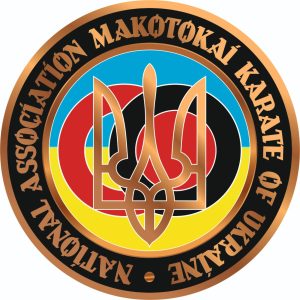
Makotokai Karate
Master Paolo Bolaffio
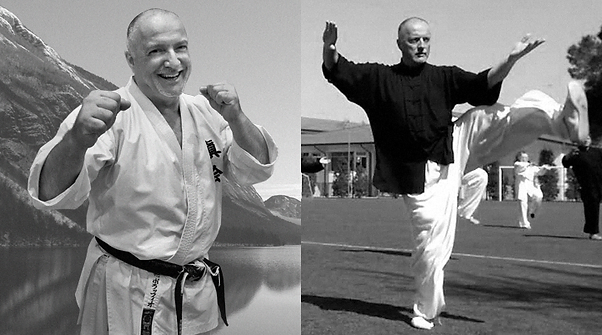

Master Paolo Bolaffio, originally from Italy, is one of the greatest martial arts masters of our time. He is the founder of Makotokai Karate and the president of Makotokai International. Paolo dedicated his life to the study and research of the deepest meanings of martial arts. His motto is “If it can be proven, it works,” and he himself teaches all his students to be strong in order to be useful.
Paolo started practicing karate at the age of eight, when this art was almost unknown in Italy. He also studied Olympic fencing, which helped him understand the concepts of timing and action/reaction. The master traveled the world to learn more about different martial arts. Inner Chinese and Taoist styles had a great influence on his perception of martial arts. He completed his training and became a Sifu in Chinese martial arts.
Internal and external martial arts, through deep research, study and endless testing, allowed Paolo to develop his karate style. He began to search for the true essence of martial arts, embodied in their effectiveness and power. He never stopped at what he had achieved and always strived for perfection.
Master Paolo Bolaffio is a unique personality in the world of martial arts. His research and discoveries led to the development of his own style of karate and make him one of the most sought after teachers and masters. He continues to share his knowledge and experience with his students, inspiring them to be strong and useful. Master Paolo Bolaffio is the epitome of dedication and a passionate approach to martial arts, and his achievements and contributions to this field are increasingly recognized and respected around the world.
THE HISTORY OF KARATE
Literally translated from Japanese karate means “empty hand”. The art of fighting with bare hands has a complicated history. We will talk about one of its versions. According to her, karate as a martial art originated among the oppressed inhabitants of Okinawa. In the first half of the 15th century, the emperor forbids the storage of cold weapons, ultimately, to ensure the safety of themselves and their relatives, the islanders developed the previously existing types of fist fighting. Continental, in particular Chinese, as more developed types of martial arts became a good basis, or perhaps an addition to the existing system. One way or another, we now have a slender universal self-defense system that occupies one of the leading places in the world in terms of the number of adherents.
JAPANESE HIEROGLYPHS OF KARATE
Until the 20th century, the word “karate” was written with two characters, one of which, kara, meant China. Guchin Funakoshi became the author of a new semantic meaning, he successfully replaced the hieroglyph meaning “China” with the consonant but meaningful “void”.
The task of Okinawan karate was to kill the enemy very quickly at the beginning of the fight. It was a necessity of those harsh times, but lost its original meaning after the onset of the humane 20th century. Guchin Funakoshi, who is the founder of today’s sports karate, was the first to show the karate technique to the mass public, and he spoke about karate not only as a perfect method of self-defense, but also as a philosophy that educates a fighter spiritually and physically. However, one of the principles of karate – victory with one blow or the first move, sounds like an echo of those distant times when karate was born.

Ahmad Safi (Afghanistan)
Ahmad Safi is one of the most famous masters of Makotoka karate in Afghanistan. He started his career from his youth and became the first Afghan to win an international title directly from him. Akhmad is actively working to popularize karate in his country, holding seminars and tournaments. Surely this sport is becoming increasingly popular among young people.
There are more than 70 different styles of karate.
Interesting fact: in Russian-speaking countries, those who practice karate are called karatekas. Although, according to dictionaries, the correct name for such people is Karateka.
Contrary to popular belief, Japan is not the birthplace of karate. This martial art originated in China, from where it later came to the island of Okinawa, where it received the name “karate” – “Chinese hand”. The rest of Japan learned about karate only at the end of the 19th century. Since Japanese-Chinese relations were quite tense at that time, the Chinese origin of martial arts was rejected. In 1936, on the eve of the Sino-Japanese War, in the word “karate” the hieroglyph “kara” (Chinese) was replaced by the consonant hieroglyph “kara” – “empty”. In addition, the ending “k” was added to the term – “path”. It turned out “karate-do” – “the way of the empty (unarmed) hand.” The author of the concept of “karate-do” is considered to be the legendary Gichin Funakoshi, the founder of the Shotokan style.
As you know, in karate, belts of different colors are awarded for different levels of skill. The gradation of belts and their number may vary significantly depending on the style. Interestingly, in the “original” Okinawan karate there were only five belts, the colors of which were explained very simply:
– white – a clean beginner’s belt, just started training;
– yellow – the belt of a student who spent a long time mastering basic techniques and sweated a lot (it was from sweat that the belt became yellow);
– red – the belt of a student admitted to fights (the belt turned red from the blood spilled during training);
– brown – the belt of a “fierce” student, which misses blows much less often (the blood on the belt had time to dry out and turn brown);
– black – a master’s belt, blackened with dirt and blood over time.
Another interesting fact: Masutatsu Oyama, the creator of Kyokushinkai – one of the most popular and tough styles of Japanese karate – is not Japanese. He was born in Korea, where he is known as Choi En Ii.
To popularize his style, Masutatsu Oyama held fights with bulls, and he entered the arena completely unarmed. According to the official version, Oyama managed to defeat 52 bulls over the years, killing 3 of them. The master’s “trick” was cutting off bull horns with the edge of the palm (48 bulls were injured). True, evil tongues say that the horns were first filed down.
Kyokushinkai has the concept of “hyakunin-kumite” – a test of 100 fights, the successful completion of which is an indicator of unsurpassed skill and true fortitude. According to the rules of the test, a fighter must, without rest (!), carry out 100 two-minute full-contact fights with different opponents, and must win at least 50. Currently, there are about 15 people all over the world who have managed to successfully pass this test.
Perhaps the toughest style of karate is Daido Juku Karate-do (Kudo), which has only a small number of restrictions in striking and wrestling techniques. Interestingly, at the Japanese championships sometimes even groin strikes are allowed! During fights, fighters who practice kuda use special helmets with a plastic visor to protect their faces. For this they are jokingly called astronauts.
Karate has been studied by such celebrities as Chuck Norris, Jean-Claude Van Damme and Bear Grylls. It is interesting that the king of rock and roll himself, Elvis Presley, was a karateka (and with a black belt!), who studied this martial art in the army. They say that on the set of the movie “Baby Gallahed”, Elvis easily crushed bricks with his blows.
Certification testing with Makotokai Karate
On April 12, a Makotokai karate certification test was held in Odessa. More than 30 athletes from different clubs gathered to test their knowledge, technique, and overall level of training.
Among the participants was Arsham Pakhlevanzadeh. For many athletes, this was an important opportunity to take a step forward in their development, overcome anxiety, and show in practice everything they had learned.
The event was attended by the rector of the Odessa International Academy, Alireza Pakhlevanzadeh, who supported the participants and had the opportunity to observe how the certification was conducted.
Photo report from the All-Ukrainian mixed martial arts training camp held on February 15-16, 2024 in the city of Odesa
– NGO “NATIONAL CENTER OF MARTIAL ARTS OF UKRAINE “VOLIA”
– VP VGO “NAMKU” IN ODESSA REGION
– VP VGO “NAMKU” IN THE CITY OF Odesa
With the assistance of:
– ODESSA UNIVERSITY OF INTERNAL AFFAIRS
From the air
Head of VP VGO “NAMKU” Odessa region, sensei Ivan Tsymbalyuk, 3 dan (MCIA)
More photos: facebook.com
Opening of the WKMO World Cup – 2024
WORLD KARATE MARTIAL ARTS ORGANIZATIONS
MAKOTOKAI KARATE INTERNATIONAL ASSOCIATION
NATIONAL ASSOCIATION MAKOTOKAI KARATE OF UKRAINE
11/23/2024 – 11/24/2024 ITALY
Young and talented karate player Arsham Pakhlevanzade became a participant in the Opening of the Karate World Cup, organized by the World Karate Federation WKMO. The meeting took place on November 23, 2024 – November 24, 2024, bringing together the strongest athletes from around the world.
Arsham Pakhlevanzade won his green belt at the WKMO Open World Cup – 2024.
Arsham demonstrated outstanding technical skills and fortitude as he earned a green belt, symbolizing his transition to a new level of mastery. For an athlete who started his career several years ago, this is a significant achievement that reflects his perseverance and love for karate.
A green belt in the WKMO system is an important step in the progress of athletes. It shows the ability to perform more complex technical elements and readiness to participate in higher categories of competitions.
Arsham Pakhlevanzadeh successfully presented a series of “Kumite” moves that impressed the audience and the judges. He once again proved his skill, perseverance and thirst for competition.
I would like to express my sincere gratitude to the head of the “NATIONAL ASSOCIATION OF MAKOTOKAI KARATE OF UKRAINE” Ihor Levytskyi. In a difficult time, when the world is faced with many challenges, it is important to have people who remain faithful to their mission – to educate the younger generation, support their development and prepare them for future challenges.
We thank Methodist instructor (trainer) Jasmin Baison for her dedication and desire to educate the younger generation. Your faith in children will make them real champions.
We would like to express our sincere thanks to ODESK LYCEUM #2 for supporting Arsham on his way. Thank you for giving him the opportunity to develop his talent, encouraging him to combine studies and sports achievements. Special thanks to the teachers who understand his participation in competitions and support his desire for success.
Your understanding, care and faith in his abilities became an important support for him on this path.
Meeting with Makotokai karate of the All-Ukrainian level “MAKOTO BUDO – 2024”
On November 2-3, 2024, an educational and training meeting with Makotokai karate of the All-Ukrainian level “MAKOTO BUDO – 2024” was held in Odesa
The rector of the Odesa International Academy of Medicine, professor Alireza Pakhlevanzade, was invited to the solemn opening of the sports event as an honored guest, where he received a personal award for his active social and public position.
